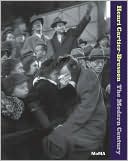Imagining Indians in the Southwest: Persistent Visions of a Primitive Past
In Imagining Indians in the Southwest, Leah Dilworth examines the creation and enduring potency of the early twentieth-century myth of the primitive Indian. She demonstrates how visions of Indians — created by tour companies, anthropologists, collectors of Indian crafts, and modernist writers — have reflected white anxieties about complex racial and cultural issues.\ Dilworth explores diverse expressions of mainstream society's primitivist impulse — from the Fred Harvey Company's guided tours...
Search in google:
In Imagining Indians in the Southwest, Leah Dilworth examines the creation and enduring potency of the early twentieth-century myth of the primitive Indian. She demonstrates how visions of Indians — created by tour companies, anthropologists, collectors of Indian crafts, and modernist writers — have reflected white anxieties about complex racial and cultural issues. Contending that Native Americans of the Southwest still are seen primarily as living relics, Dilworth describes the ways in which they have resisted cultural colonialism. Library Journal With the advent of the railroads, Americans flocked to the Southwest. Visitors were fascinated by the Native cultures, particularly those of the Pueblos, seeing in their "primitive" societies values lost to the mainstream industrialized culture. Dilworth (English, Long Island Univ.) contends that tourists, collectors, and anthropologists alike re-created the image of the Native societies to conform to Euro-American primitivist ideals. In exploring this thesis, Dilworth evaluates turn-of-the-century descriptions of the Hopi Snake Dance and discusses the crucial role played by the Fred Harvey Company in exploitation of these cultures. Arguing that Native realities were marginalized by those who purported to describe them, the author includes a consideration of two contemporary artists, Pueblo poet and sculptor Nora Naranjo-Morse and Hopi photographer Victor Masayesva, who re-create the Native-white exchange from a Native point of view. This thoughtful study merits inclusion in most collections.-Mary B. Davis, Huntington Free Lib., N.Y.
List of IllustrationsAcknowledgmentsIntroduction11Representing the Hopi Snake Dance21Textualizing the Snake Dance24The Snake Dance in Ethnographic Exhibits44The Snake Dance as a Tourist Attraction54Cultural Incorporation of the Snake Dance62The Snake Dance as a Spectacle682Discovering Indians in Fred Harvey's Southwest77The Rise of the Fred Harvey Company80The Spectale of Fred Harvey's Southwest82Appearing and Disappearing in Fred Harvey's Southwest95The Machinery of the Tourist Spectacle103The Touristic Exchange117Re-presenting the Touristic Encounter1223The Spectacle of Indian Artisanal Labor125The Development of Markets for Indian Crafts126The Collector-Connoisseur133The Indian Artisan141Imagining Primitive Labor151Artisanal Craft as a Tool of Reform157Limitations of the Artisan Stereotype1644Modernism, Primitivism, and the American Rhythm173Modernist Primitivism174Cultural Nationalism and Regionalism182Primitivism as a Cultural Cure191The Indian and Aesthetic Authenticity199The Semiotics of Playing Indian206Epilogue211Notes227References243Index269
\ Library JournalWith the advent of the railroads, Americans flocked to the Southwest. Visitors were fascinated by the Native cultures, particularly those of the Pueblos, seeing in their "primitive" societies values lost to the mainstream industrialized culture. Dilworth (English, Long Island Univ.) contends that tourists, collectors, and anthropologists alike re-created the image of the Native societies to conform to Euro-American primitivist ideals. In exploring this thesis, Dilworth evaluates turn-of-the-century descriptions of the Hopi Snake Dance and discusses the crucial role played by the Fred Harvey Company in exploitation of these cultures. Arguing that Native realities were marginalized by those who purported to describe them, the author includes a consideration of two contemporary artists, Pueblo poet and sculptor Nora Naranjo-Morse and Hopi photographer Victor Masayesva, who re-create the Native-white exchange from a Native point of view. This thoughtful study merits inclusion in most collections.-Mary B. Davis, Huntington Free Lib., N.Y.\ \ \ \ \ Quarterly Southwestern HistoricalDilworth paints an extraordinary landscape of actions and reactions of the first American visitors to the villages and ceremonials of the first Americans....This is a riveting...study of late-nineteenth and early-twentieth century Indian-white contact. -- Southwestern Historical Quarterly\ \








